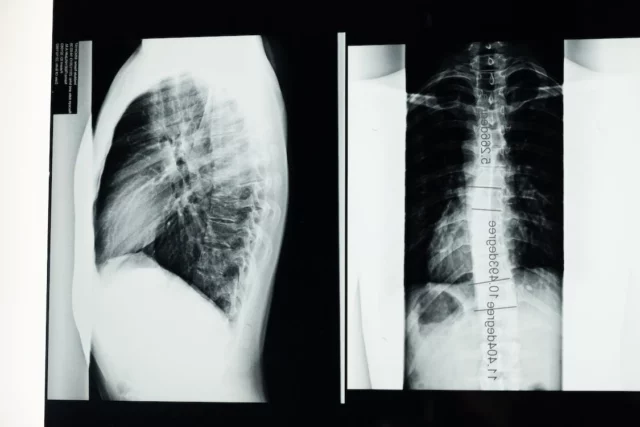Every state has different car accident and auto insurance laws. If you are involved in a car accident in Texas, what can you expect? And how can you protect your rights, and recover from all your damages? Here is everything you need to know about Texas at fault accident laws, what is a no-fault state, and whether Texas is a no-fault state.
What Does an “At-Fault” Car Accident Insurance System Mean?
An “at-fault” state means that the person who caused the accident is financially liable for paying for damages. The insurance company of the person who caused the accident pays for the damages, up to the limits of their policy.
Each state has laws that govern how to determine negligence, and therefore who is “at fault” for the accident. This means that insurance adjusters apply the standard for that state when determining who is liable for an accident, which then determines how much they offer in the settlement process. Most states are “at-fault” states.
What Does a “No-Fault” Car Accident Insurance System Mean?
For people who wonder what is a no-fault state, car insurance compensates people for damages, regardless of who caused the accident. Each person in the accident files a claim with their own insurance company, and is compensated according to their policy, without determining liability.
In no-fault states, drivers are usually required to carry personal injury insurance in addition to their auto insurance. Personal injury coverage pays for medical bills, while auto insurance pays for property damage.
Is Texas a No-Fault State?
No. Texas is an at-fault state. According to Texas auto insurance laws, the person who caused the accident is responsible for paying for damages.
In fact, Texas at-fault accident laws make it a “modified comparative fault” state. Comparative fault (also called “proportionate responsibility”) is used when both people contributed to an accident.
For example, if one driver was obeying a traffic signal, and another driver rear-ended them, the driver who rear-ended the vehicle might be 100% responsible for the accident.
In a different case, if a driver was obeying a traffic signal, and got rear-ended by another vehicle, but was not wearing a seat belt, an investigation may determine that their injuries would be less severe if they had been complying with Texas seat belt laws. In that case, the driver who caused the accident might be held liable for 75% of the damages, but the driver who wasn’t wearing a seat belt might be held liable for 25%.
Many states use comparative fault in the case of auto accidents. In Texas, the “modified” version of comparative fault is meant to discourage lawsuits by making it difficult for the at-fault driver to recover damages. If a person was injured in an accident, but they caused 51% or more of the damage through their own negligence, they cannot recover any damages.
For example, if a driver rear-ended another vehicle that was obeying a traffic signal, and was injured as a result, they may have significant medical costs. But if they have more than 51% of the blame, they cannot recover any of the costs.
How Do Texas Auto Insurance Laws Work in an Accident?
If you have been injured or suffered property damage in a car accident in Texas, here are some of the most common questions you may have.
- What happens if I disagree with the insurance settlement? If you feel that your auto insurance company has made an incorrect or unfair determination, review your policy to follow the appeal process, or contact the Texas Department of Insurance to file a complaint. If the other driver’s insurance company offers you a settlement that you feel is unfair or not enough, you can reject the settlement offer and file a personal injury or property damage lawsuit instead. Negotiating with insurance companies can be frustrating and difficult, and they may not offer you everything you are entitled to. It is always a good idea to consult with a Texas personal injury attorney before accepting or rejecting a car insurance settlement.
- What happens when the other driver is uninsured? In Texas, car insurance policies have uninsured motorist coverage by default, but you can opt-out of uninsured motorist coverage by filing the necessary form with your insurance company. If you have uninsured motorist coverage, you can recover damages from your own insurance company, up to your policy limits. If you are hit by an uninsured driver, and you do not have uninsured motorist coverage, you can take the driver to court for personal injury and/or property damage. However, many uninsured motorists do not have enough money to pay your claim, even if you win the case.
- How quickly do I have to act? In Texas, you have two years to file a lawsuit after a car accident. However, it is always best to consult with an attorney as soon as possible. The evidence in your case, like photos of damage or the accident scene, police reports, witness statements, and more, might be more difficult to collect later on. The other driver’s insurance company will conduct an investigation, but it is always a good idea to have a Texas personal injury lawyer working on your side.
When Do You Need a Texas Car Accident Attorney?
If you have been in a car accident that wasn’t your fault and suffered damages as a result, it is always a good idea to consult with a qualified attorney. A Texas car accident lawyer can help you understand your rights, negotiate with the insurance company, and take matters to court if necessary.
Aaron Allison offers free consultations to victims of car accidents, and our family-owned Texas law firm operates on a contingency basis, so you don’t pay anything unless we are successful in your case. Contact us today for more information about how we can help you recover from a car accident.






